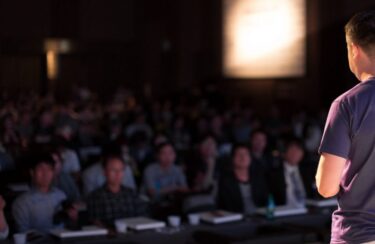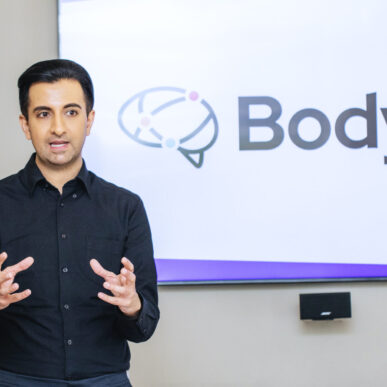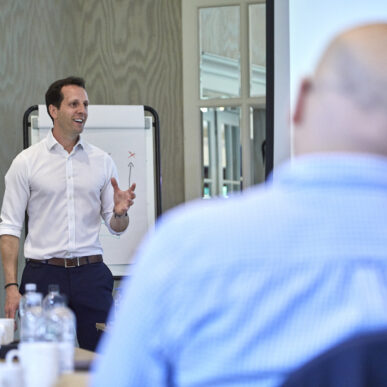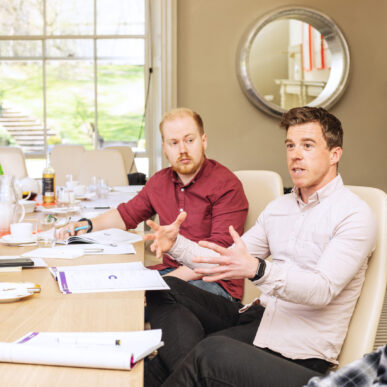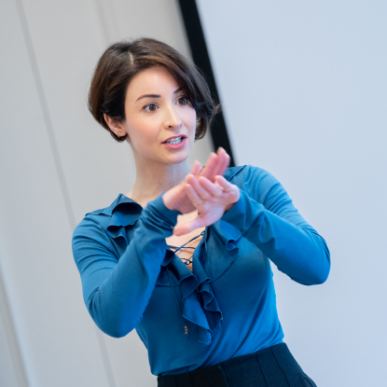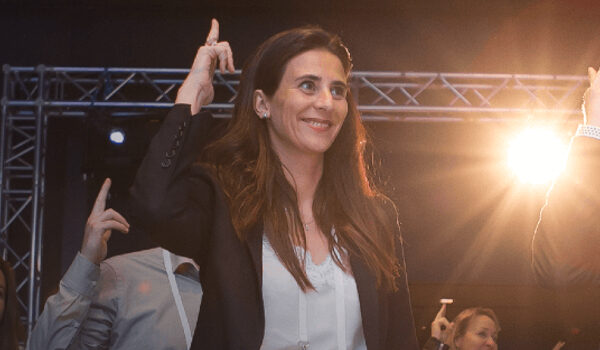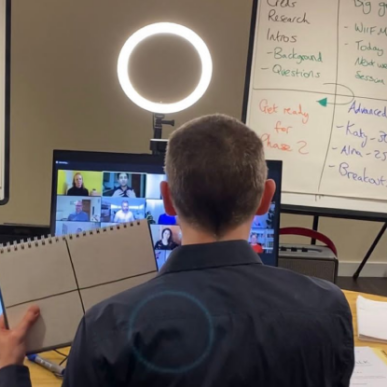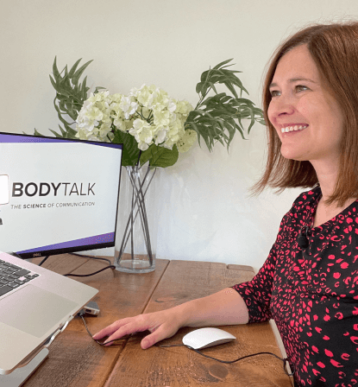“Not even the most gifted fortune teller would be able to foresee a projector breaking down”
Perform At Your Best Under Pressure With This 1 Simple Technique
Muhammad Ali could predict the future.
Well, almost. His ability to visualise the outcome he wanted from each of his fights and then have it happen was so spot-on that bookies pleaded with him to stop announcing his intentions in public because they were losing so much money. Imagine what you could do with that level of future accuracy in the key moments of your career.
The truth is you are probably already doing this, but it’s working against you. Without realising it, the vast majority of people are creating a “future history,” a term coined by Ali himself, by focusing on what could go wrong in an upcoming event instead of thinking about what they want to achieve.
What tends to happen for most people is they feel the pressure about an important meeting or presentation, and become anxious and worried. They start visualiSing or imagining a negative version of the future. You might imagine that your interview, sales pitch, or presentation is going to go badly. By holding onto these pessimistic thought patterns, you’re creating a future in which you fail.
A future history is visualisation with extreme intent.
It means believing that something is going to happen in the future so clearly that it’s almost like it’s already happened. The more you do this, the more your brain believes it will happen that way, creating positive neural pathways that you can follow on the day.
British Olympic cyclist Chris Hoy visualised every detail of his 2012 gold-winning Olympic race hundreds of times — he knew exactly what he was going to do to get the result he wanted. He was so precise in this imagining that when he won, he couldn’t tell if the moment was real or imagined until he threw his fist in the air in celebration.
Some people say, “Well, I’m not a visualiser so that’s not for me,” and that’s okay — it can simply be thinking with focus on your next steps and how you’re going to handle your big moment.
What tends to happen is people get anxious or worried and start thinking, “Oh no, this presentation is going to go poorly,” or, “I’m going to mess this up.” And they spend so much time and energy in that line of thought that when they finally arrive at their event, their brain goes, “Oh, yeah! I remember this! I’m supposed to be worried and anxious right now because this is definitely going to go badly!

But if you spend the days leading up to your big presentation thinking about how you’ll succeed, and focusing on all the things that will work out, then when it comes time to present, your brain will be convinced that it’s only supposed to go one way — perfectly.
If you visualise clearly enough, your mind won’t know the difference between reality and your imagination. Your brain will believe that you have succeeded at your event many times before. Just like following muscle memory, your mind will be compelled towards success.
You will have overridden your monkey mind and you will be free to perform at your best.
Naturally, there are some things you can’t predict — technology, other people, weather, road construction, etc.
Not even the most gifted fortune teller would be able to foresee a projector breaking down, a building catching fire, your boss getting sick.
This is why it’s critical to stay focused on you in creating future histories.
You are the only element you have control over.
For example, I was doing an event in Las Vegas where I’d be teaching 1,000 people storytelling techniques. I did my homework beforehand and called the venue a month in advance to ask about seating arrangements, space availability, and what kind of technology I’d be working with. I was worried about their plan to have people sitting at tables far away from where I’d be presenting, but they assured me they had a “new magic tool” that would “bring everything to life.”
So, I showed up an hour and a half early on the day of my workshop. Nothing worked.
The guy I’d spoken to before arriving was out sick and the person covering for him had no idea how anything worked. He couldn’t get the projector screen to function. He couldn’t even get the microphone to work.
But I had a plan.
In my future history, if everything broke (like new tech so often does), then I would still give the workshop to the best of my ability and work with what I had. I’d spent the weeks leading up to this workshop going for morning runs and visualising how well my Plan B would go. 1,000 people entered the room with coffee and a desire to learn, and instead of panicking, I took a deep breath, closed my eyes, visualised my Plan B going smoothly, and began my presentation.
In the end, my client was grateful for how well the event went despite the technical errors and I was grateful I’d created a reliable future history to help me succeed.
Essentially, it all comes down to your attitude.
The best future histories focus on how you can control your reaction, even when everything goes wrong.
You don’t always have to plan for everything breaking, but consider how you’ll be able to recover from any potential missteps. You’re still planning for the future — you’re just planning for how well you’ll adapt instead of how wrong everything can go.
This need for positivity in future histories means I usually tell people to create them when they’re fresh.
I encourage people to do this exercise for about fifteen minutes a day, starting two weeks out from your event: to get up in the morning when you’re nice and fresh and go for a walk. Ideally, go into nature — a field, the beach, or the woods, if you can — and just keep moving. Do what you need to do to get into the emotional state you want for your big day, whether that’s a sense of happiness, joy, relaxation, calm, or whatever you want to be.
Then start to visualise, “Okay this is me going through this event and everything going well.” What you’ll notice early on is that your mind starts to worry and says, “Hmm, I think this might happen, or that might happen.” When you finish the visualisation, you can think, “Okay, well what actions can I take in order to make sure this event goes well? What actions can I take to craft a plan B?”
Once you’ve begun to train your brain to believe in the best possible outcome and to associate major moments with a sense of success and positivity, you’ll notice how much you cease to focus on potential failure. Your visualisations can become your greatest asset in finding a calm centre, no matter what life throws your way, and performing at your best whenever you need to.
To learn more about how we can help with your mindset and focus please contact our team.
